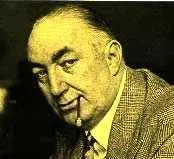The Man Who Knew
The Man Who Knew
by
Edgar Wallace

Contents
I. THE MAN IN THE LABORATORY
II. THE GIRL WHO CRIED
III. FOUR IMPORTANT CHARACTERS
IV. THE ACCOUNTANT AT THE BANK
V. JOHN MINUTE'S LEGACY
VI. THE MAN WHO KNEW
VII. INTRODUCING MR. REX HOLLAND
VIII. SERGEANT SMITH CALLS
IX. FRANK MERRILL AT THE ALTAR
X. A MURDER
XI. THE CASE AGAINST FRANK MERRILL
XII. THE TRIAL OF FRANK MERRILL
XIII. THE MAN WHO CAME TO MONTREUX
XIV. THE MAN WHO LOOKED LIKE FRANK
XV. A LETTER IN THE GRATE
XVI. THE COMING OF SERGEANT SMITH
XVII. THE MAN CALLED "MERRILL"
I. THE MAN IN THE LABORATORY
The room was a small one, and had been chosen for its remoteness from the dwelling rooms. It had formed the billiard room, which the former owner of Weald Lodge had added to his premises, and John Minute, who had neither the time nor the patience for billiards, had readily handed over this damp annex to his scientific secretary.
Along one side ran a plain deal bench which was crowded with glass stills and test tubes. In the middle was as plain a table, with half a dozen books, a microscope under a glass shade, a little wooden case which was opened to display an array of delicate scientific instruments, a Bunsen burner, which was burning bluely under a small glass bowl half filled with a dark and turgid concoction of some kind.
The face of the man sitting at the table watching this unsavory stew was hidden behind a mica and rubber mask, for the fumes which were being given off by the fluid were neither pleasant nor healthy. Save for a shaded light upon the table and the blue glow of the Bunsen lamp, the room was in darkness. Now and again the student would take a glass rod, dip it for an instant into the boiling liquid, and, lifting it, would allow the liquid drop by drop to fall from the rod on to a strip of litmus paper. What he saw was evidently satisfactory, and presently he turned out the Bunsen lamp, walked to the window and opened it, and switched on an electric fan to aid the process of ventilation.
He removed his mask, revealing the face of a good-looking young man, rather pale, with a slight dark mustache and heavy, black, wavy hair. He closed the window, filled his pipe from the well-worn pouch which he took from his pocket, and began to write in a notebook, stopping now and again to consult some authority from the books before him.
In half an hour he had finished this work, had blotted and closed his book, and, pushing back his chair, gave himself up to reverie. They were not pleasant thoughts to judge by his face. He pulled from his inside pocket a leather case and opened it. From this he took a photograph. It was the picture of a girl of sixteen.
1 comment